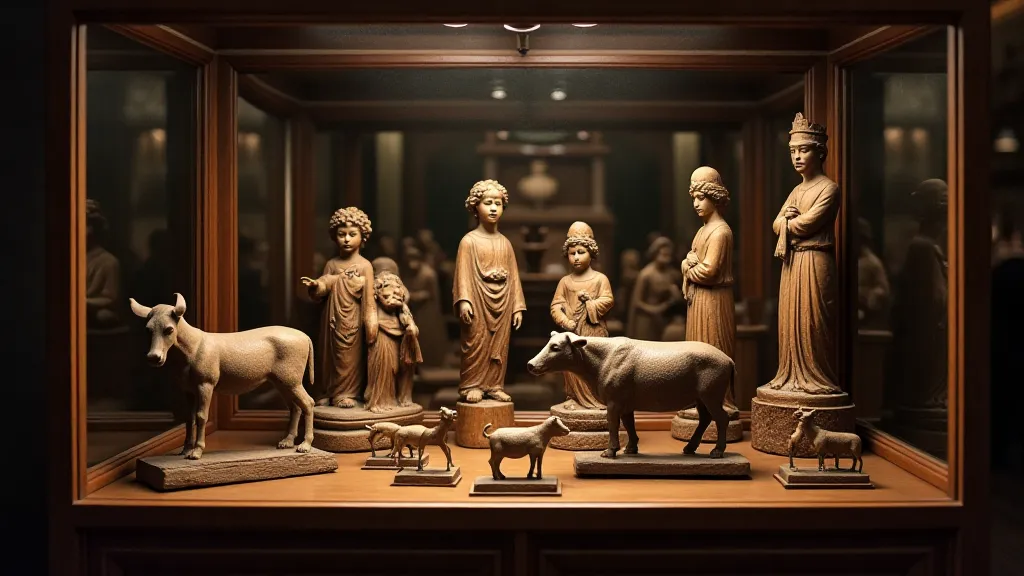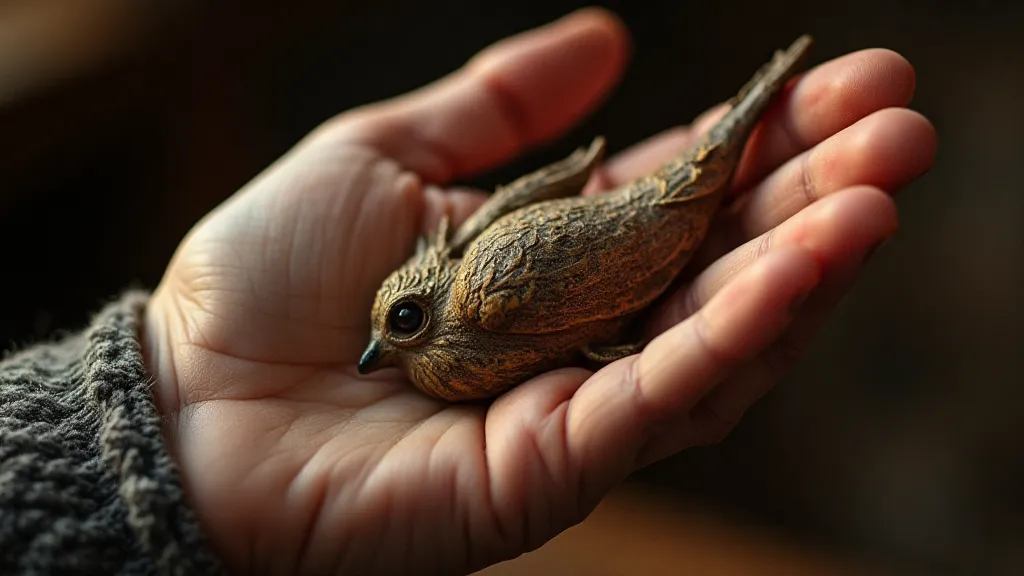Resonance and Ruin: The Poetics of Decay in Antique Wood Carvings
There’s a certain melancholic beauty that clings to antique wood carvings, a palpable sense of history embedded within the grain and the wear. It’s a beauty that transcends the purely aesthetic, reaching into a realm of emotion, memory, and the profound passage of time. Unlike the pristine perfection we often strive for in modern craftsmanship, the charm of aged carvings lies in their imperfections – the cracks, the chips, the faded paint – each a testament to the hands that shaped them and the lives they’ve witnessed.
My own fascination with these objects began with my grandfather. He wasn't a carver himself, but he collected them. His small study, dimly lit and smelling of beeswax and aged paper, housed a collection of folk art treasures, mostly simple wooden figures: farm animals, whimsical human forms, and biblical scenes rendered with astonishing naïveté. I remember running my fingers over the rough texture of a weathered Madonna, feeling the vulnerability of the paint, the slight warping of the wood. He's gone now, but the memory of that room, and the quiet reverence he held for those carvings, remains vivid. Those weren’t just objects; they were vessels of stories.
The Hands of Tradition: Regional Carving Styles
The beauty of decay isn't universal; it's inextricably linked to the context and tradition from which a carving originates. Regional wood carving styles represent a rich tapestry of cultural expression, often reflecting local beliefs, economic realities, and available materials. Think of the intricate, polychrome wood carvings of Tyrol in Austria, where generations of artisans crafted elaborate religious figures and architectural details, often incorporating local folk legends. Or consider the simpler, more rustic carvings of Appalachian folk art in the United States, where humble materials were transformed into expressions of rural life and spiritual devotion. The way landscape itself influences the artistic process is fascinating; a keen observer might find that understanding how the environment shapes carving narratives adds another layer of appreciation for these artifacts.
In Scandinavia, the tradition of *huggningsskulptur* – carvings produced by directly shaping the wood, leaving the natural forms of the tree largely intact – speaks to a deep respect for the materials and a desire to connect with the natural world. These carvings, often depicting animals or human figures, possess a unique rawness and authenticity that is profoundly moving. The fading paint on these older pieces, the slight distortion of the wood from decades of fluctuating temperatures – it all contributes to a sense of lived history. These marks aren't defects; they are clues to the carving’s journey.

The Poetry of Imperfection: More Than Just Wood
The appeal of antique wood carvings goes beyond mere aesthetic preference. It's about connecting with a past that feels both distant and intimately familiar. A chip in a painted cheek might evoke a moment of play, a long-ago child’s touch. A crack in the wood might whisper of the hardships endured by the carver, the economic pressures that dictated their materials and techniques. These aren't flaws to be hidden; they are evidence of a life lived, a story unfolding.
The passage of time isn't always kind. Sunlight can bleach colors, humidity can cause warping, and countless hands have left their mark on the surface. But within this degradation lies a unique kind of beauty—a beauty born of resilience, of enduring spirit. A restoration that removes all traces of age risks erasing the very essence of what makes the carving so compelling. Imagine stripping away the soft patina of centuries, leaving a stark, lifeless replica. The soul is lost. The repetitive patterns often found in folk art, though seemingly simple, carry deep meaning and offer a glimpse into the mind of the artisan; delving into the sculptor's soliloquy reveals surprising depths of creativity and intention.
Understanding the Value and the Care
While the inherent beauty of antique wood carvings lies in their aged character, understanding their provenance and condition is crucial for both collectors and those simply appreciating these artifacts. Regional styles often command different values; Tyrolean carvings, for example, are often highly sought after due to their intricate detail and historical significance, while Appalachian folk art pieces are prized for their simplicity and authenticity. Recognizing the distinctive characteristics of each region can significantly inform your appreciation and, if you’re a collector, your purchasing decisions.
Care for antique wood carvings is largely about preservation, not restoration. Avoid direct sunlight and extreme humidity, which can accelerate deterioration. Gentle cleaning with a soft cloth can remove surface dust, but harsh chemicals should be avoided at all costs. A beeswax polish can help protect the wood and enhance its natural luster, but should be applied sparingly to avoid obscuring the carving’s character. The goal isn't to return the carving to its original state, but to stabilize its condition and prevent further damage.

The Echo of the Carver's Hand
Looking at an antique wood carving, you’re not just looking at an object; you’re engaging with a conversation across time. You're seeing the echo of the carver's hand, the imprint of their skill, their passion, and their connection to a specific cultural moment. The small inconsistencies in the carving, the subtle asymmetries, the slight variations in the paint – these are not errors; they are the hallmarks of human creativity, the testament to a process that was both meticulous and deeply personal. The grain itself becomes a record, silently revealing the journey of the wood and the maker's touch; learning to read the secrets in wood's texture unlocks a profound understanding of the carving’s story.
The beauty of decay isn't about celebrating ruin; it’s about recognizing the enduring power of human creation in the face of time's relentless march. It’s about finding solace and inspiration in the imperfections, and appreciating the stories that these weathered objects have to tell. It’s about understanding that true beauty isn’t about flawless perfection, but about the grace and resilience of a life lived, a story told, and a legacy preserved in the grain of the wood. Sometimes, the most profound narratives aren't explicitly carved but are embedded within the historical context and the materials themselves; the carvings often serve as chronicles, embodying community history in wood and acting as tangible links to the past.

Beyond the practical considerations of care and preservation, there's a deeper philosophical resonance to these objects. They represent a departure from the modern obsession with newness and perfection, offering instead a profound appreciation for the beauty of age and the marks of time. They invite us to consider the fragility of existence and the ephemeral nature of human creation. The enduring appeal of these carvings lies not only in their visual charm but also in their ability to connect us to a lineage of artisans and storytellers who have, for generations, found solace and expression in the simple act of shaping wood.
Furthermore, the materials themselves carry a history. The type of wood used, its origin, and its journey to the carver’s hands all contribute to the narrative. Examining these details can reveal surprising connections to economic conditions, trade routes, and cultural exchange. Even the paint used – its color, its opacity, and its ability to withstand the ravages of time – speaks volumes about the resources available to the artist and the priorities of the community.
Ultimately, the appreciation of antique wood carvings is a journey of discovery. It requires a willingness to look beyond the surface, to embrace the imperfections, and to listen to the stories that these objects have to tell. It is a reminder that true beauty is not about flawless perfection but about the grace and resilience of a life lived, a story told, and a legacy preserved in the grain of the wood.





